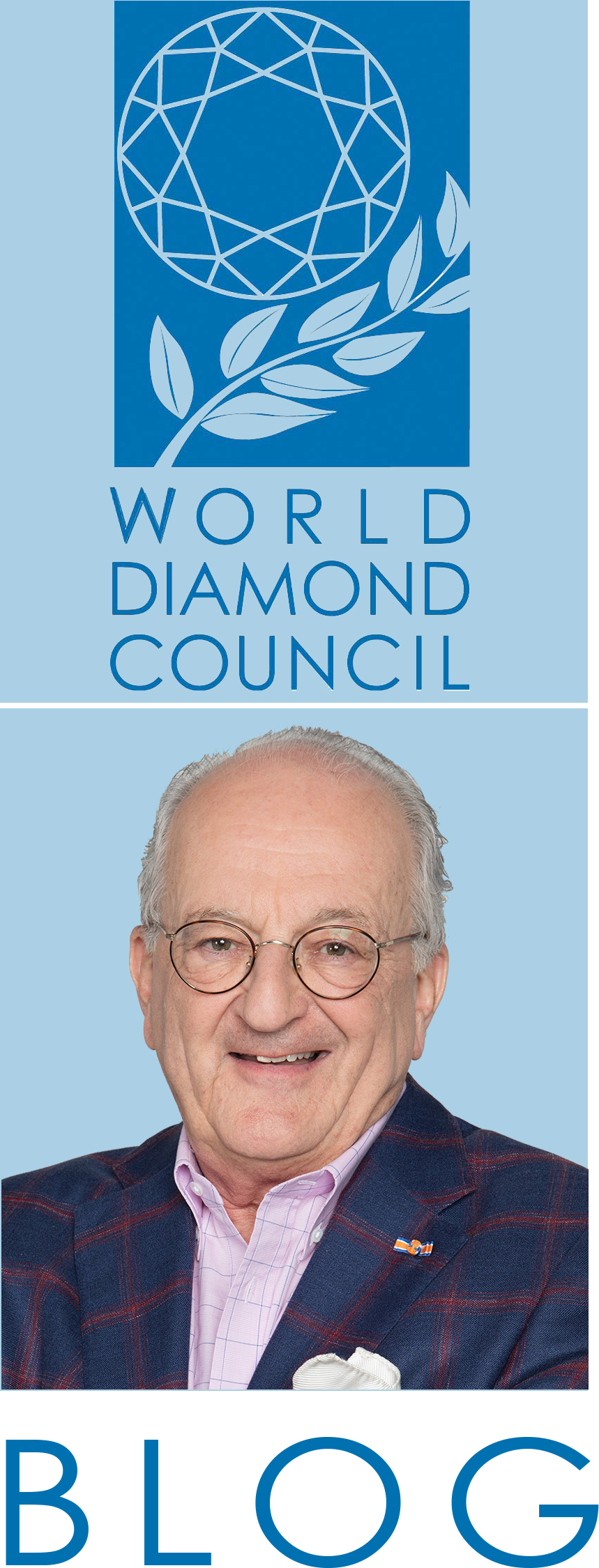RECOGNIZING THE STRENGTH OF THE KIMBERLEY PROCESS
BUT ALSO ITS LIMITATIONS, AND CONSEQUENTLY INDUSTRY’S OBLIGATIONS
BUT ALSO ITS LIMITATIONS, AND CONSEQUENTLY INDUSTRY’S OBLIGATIONS
SEPTEMBER 2, 2021

Edward Asscher
WDC President
In an article published in the August edition of Rapaport Magazine and posted on August 25, 2021, on the publication’s website, entitled “Atrocities Haunt Zimbabwe’s Diamond Fields,” Farai Maguwu, a courageous civil society leader in Zimbabwe, who is the founding director of that country’s Centre for Natural Resource Governance (CNRG), writes of the plight of artisanal miners in the Marange diamond fields.
This is a downtrodden community that Mr. Maguwu has long defended, and the World Diamond Council (WDC) respects, appreciates and pays tribute to the selfless efforts he has invested on their behalf, often at great risk to himself. When, in 2010, during the time of the previous Robert Mugabe regime in Zimbabwe, he was arrested for his activities and held under difficult conditions, WDC lobbied and advocated hard for his release.
I have no intention of disputing the details that Mr. Maguwu lists in his article. He is intimately aware of the facts on the ground and has eyewitness testimony from artisanal miners living and working in the Marange region. His account alleges human rights violations and instances of bribery and extortion on the part of both state and private security officials at the site.
What I would like to address is the role, or lack thereof, of the Kimberley Process in addressing the situation in Zimbabwe. In providing a subhead to Mr. Maguwu’s article, the Rapaport editors wrote that the KP “continues to greenwash [Zimbabwe’s] conflict diamonds.” I understand their sentiment, but I think they inadvertently are assigning the KP powers that it currently does not have.
For there lies the problem. According to the Kimberley Process’s Core Document, conflict diamonds are defined as rough diamonds used by rebel movements to finance wars against legitimate governments. Objectively, there are today no rebel movements using diamonds to finance a civil war in Zimbabwe, and therefore, by definition, no conflict diamonds being are produced in the country.
Over its almost 19 years of operation, the Kimberley Process Certification Scheme (KPCS) has been remarkably successful in fulfilling its mission, eliminating almost entirely the trade in rough diamond being used to finance civil war. But it is limited in its scope, and unless that is expanded, it cannot be expected to be a panacea to other challenges afflicting artisanal miners, including human and labor rights violations, bribery and corruption.
WDC’s long-held position is that it is critical that the KPCS be able to continue to fulfil its lifesaving function, and at the same have the scope of its mission broadened so that it can address the type of challenges that Mr. Maguwu describes. This should be done by the expanding the “conflict diamond” definition in the KP Core Document, so that it id provided the authority to address instances of systemic violence related to rough diamonds, which nonetheless are not associated with civil war.
To that end, we have worked closely with the Civil Society Coalition in the Kimberley Process, and with a number of similarly minded governments, including during the three-year review process that ended in 2019. Then, we managed to convince a majority of the government Participants in the KP that change is required, but we fell short of obtaining the full consensus that is needed to amend the “conflict diamond” definition. Fortunately, the subject remains on the KP’s agenda, thanks to the agreement by the KP Chair, the Russian Federation, and the KP Vice Chair, the Republic of Botswana, to keep the effort going, and not wait for the next three-year review process.
But I am not suggesting that we sit idly by until the KP is able to reach the consensus we desire. On the contrary, as an industry that is deeply committed to a responsible supply chain, we are obliged to protect the interests of our suppliers, including those who are artisanal miners, and also our consumers, who demand that the products they buy have social value and that their integrity is not compromised.
This we must achieve by doing due diligence, and not only relying on a diamond’s being issued with KP certificate, which is only able to reliably affirm that the stone is a not associated with civil conflict, according to the current definition.
It is why WDC is introducing its new System of Warranties, by which the seller of any rough diamond, polished diamond and/or diamond set in jewelry includes a declaration on the transaction document that the merchandise is KP compliant, and also complies with universal principals of human rights, labor rights, anti-corruption and anti-money laundering.
It also is why we encourage participants in our supply to chain to implement third-party verified codes of practice, like that developed by the Responsible Jewellery Council, and to abide by the strict codes of practice demanded the mining companies supplying the vast majority of rough diamonds flowing into the pipeline.
Through this concerted and coordinated effort, as well as though the hoped-for strengthening of the Kimberley Process, I believe that we have the capacity to address the types of issues that Mr. Maguwu mentions in his article. For the people of Zimbabwe, as well for the people of any nation where our product is mined and processed, the natural diamond should be a resource for sustainable development, and symbol of hope for future generations.





